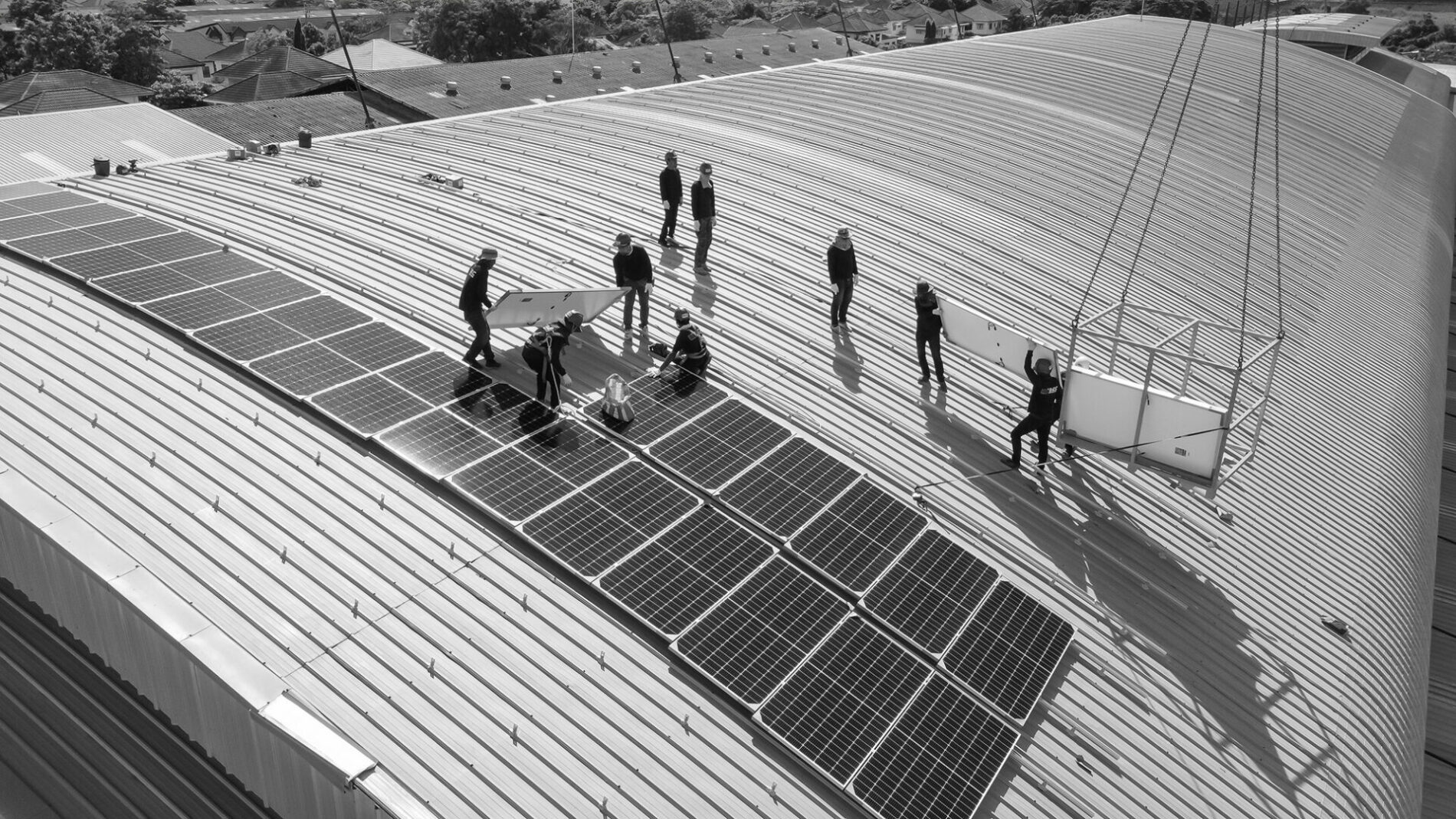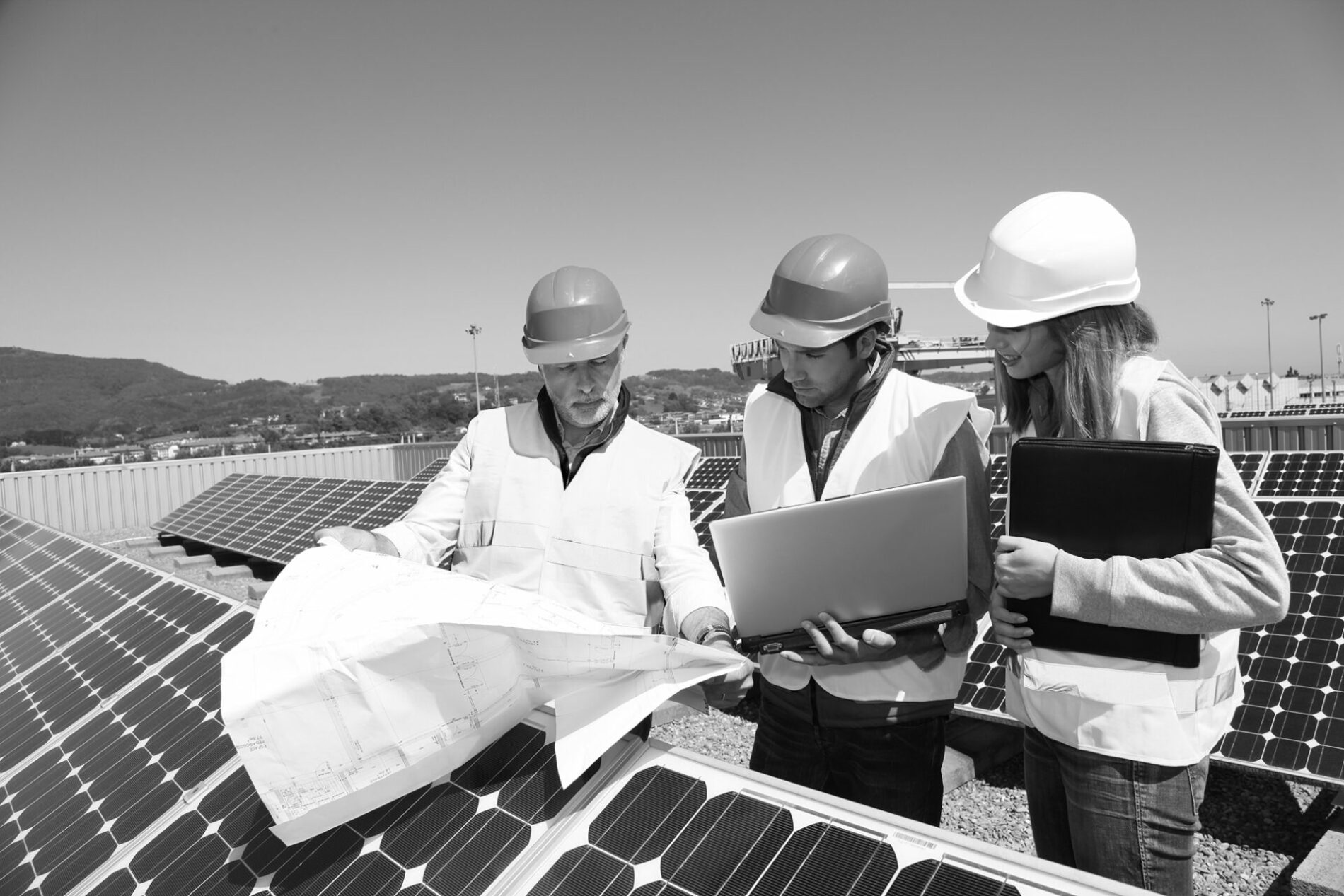Since building and construction began, humans have grappled with the challenge of powering these endeavors. From horse drawn vehicles to modern methods, the full gamut of energy sources have been utilized. Coal, oil, gas, electricity, every conceivable power source has had its time and place. The future of energy is a difficult one to predict, however. The construction industry is navigating an era marked by the occasionally opposing forces of technological innovation and environmental consciousness. This context means that renewable energy stands out as a both a hurdle to overcome and a transformative force. According to John Hopkins University, addressing the energy challenge is the single greatest one facing modern industry. “Building a sustainable energy future calls for leaps forward in both technology and policy leadership. State governments, major corporations and nations around the world have pledged to address the worsening climate crisis by transitioning to 100% renewable energy over the next few decades. Turning those statements of intention into a reality means undertaking unprecedented efforts and collaboration between disciplines ranging from environmental science to economics.” Embracing sustainable energy sources not only aligns with global efforts to combat climate change but also promises significant advancements in building practices, operational efficiency, and long-term cost savings. But as we move through various sources of energy, which one is leading the pack in terms of future proofing the industry. Which has the most potential to truly revolutionize the construction landscape.

Solar power has been a cornerstone of the push for renewable energy sources for decades. Thankfully, we have now reached a point where photovoltaic (PV) panels have become increasingly efficient and, crucially for the construction industry, they have also become more affordable. The construction industry has seen a surge in the integration of solar panels into building designs, from rooftop installations to innovative solar facades. According to Dr. Martin Green, a pioneer in photovoltaics research at UNSW Sydney, PV is now experiencing a golden period in terms of tech and cost. “Solar energy has reached a point where it is not only environmentally beneficial but also economically viable. Advances in PV technology are making it easier for buildings to generate their own power.” This view is backed up with reported advancements in solar technology, such as perovskite solar cells which promise even greater efficiency and lower costs. What’s more is that building-integrated photovoltaics (BIPV), which seamlessly incorporate solar cells into building materials like windows and walls, are starting to be seen across urban architectural designs. With the potential for smart grids and solar energy storage solutions, solar power can provide a consistent and reliable energy supply, reducing dependency on traditional energy sources.
“Advances in PV technology are making it easier for buildings to generate their own power.”
While this may seem like a failsafe solution, challenges remain. Geographical limitations, for instance, can impact a community’s ability to harness PV. In situations where abundant sunlight is not available, alternatives need to be found. Wind energy, primarily harnessed through large-scale wind turbines, is becoming a significant player in the renewable energy sector. Benefits of offshore wind farms include a comparatively high energy output and reduced land use impact. “Wind energy continues to grow in importance due to its efficiency and the decreasing cost of wind turbines. Offshore wind, in particular, holds significant promise due to higher wind speeds and less visual impact,” notes Steve Sawyer, former CEO of the Global Wind Energy Council. On a smaller scale, urban wind turbines and innovative designs like vertical-axis turbines can be integrated into building structures, providing localized energy generation. As this technology advances, improved turbine efficiency and new materials will further reduce costs and enhance performance. Interestingly, the potential for wind energy to complement solar power in hybrid systems can offer a balanced and resilient energy solution for urban developments.
Various other methods of providing sustainable energy have emerged in recent years. Geothermal energy, the process of tapping into the Earth’s internal heat, is a growing sector in the area of heat pumps and electricity generation. Karl Gawell, Executive Director of the Geothermal Energy Association believes that this energy source is one with huge potential for growth. “Geothermal energy is a reliable and constant energy source that can provide heating and cooling for buildings year-round. It is underutilized but has great potential for wider adoption.” In addition to that, the potential for further development is one that makes this energy source a key player in future markets. The expansion of geothermal technology, including enhanced geothermal systems (EGS) that can be deployed in a wider range of locations, holds significant promise. The integration of geothermal heating and cooling in building designs can dramatically reduce energy consumption and greenhouse gas emissions. With advancements in drilling technology and increased investment, geothermal energy could become a mainstream solution for sustainable construction.
One source of energy, however, seems to be on a downward trajectory. Hydropower, the first of the major sustainable energy sources, has seen a noticeable decrease in its global usage in recent years. For most of the 20th century, hydroelectricity was the only carbon-free power source, eventually providing over 90% of the electricity for a dozen smaller countries. Even into the 21st century, hydro was helping us keep ahead of our climate budgets. In 2022, China’s dams alone generated 1300 terawatt hours of electricity—enough to power the entire world in 1950.One cause for this decline may be that, since its inception in 1878, the methods has been overused to the point of being endangered. According to a recent environmental report, the sector may be running out of steam. Hydropower requires very particular terrain to operate effectively and many countries such as Switzerland, Mexico, Norway, Sweden and France have dammed most of their available rivers; up to 88% in some cases.
The future of renewable energy is one that hangs in the balance. On one hand, geographical limitations and cost are proving to be restrictive. However, the potential for synergy between various energy sources and innovative applications is a positive one. As technology advances, the integration of multiple renewable energy systems—such as solar, wind and geothermal—into cohesive and adaptive energy networks will be crucial. According to Dr. Amory Lovins, co-founder of the Rocky Mountain Institute, smart grid technology and energy storage solutions will play pivotal roles in optimizing energy use and efficiency.“By combining different renewable energy sources and utilizing smart technologies, we can create energy systems that are not only sustainable but also resilient and adaptable to future needs.”




















